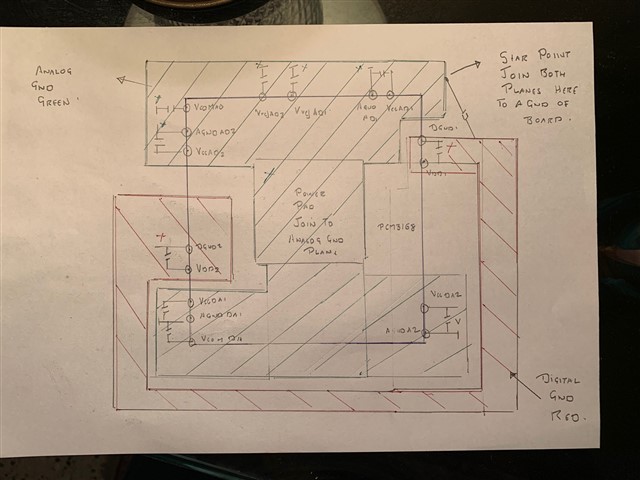Other Parts Discussed in Thread: TIDA-00609
Hello everyone,
i would be looking for some suggestions regarding AGND/DGND coupling of the PCM. For me, the datasheet-recommendation is not completely clear. "all pins should be connected under the part"?
--> does this mean, i should use only a single GND, both for AGND and DGND? The Reference Design TIDA-00609 uses a similar technique, but it does some kind of inconsequent:
One of the DGNDs is directly connected to AGND (because of part placement i guess), also AGND and GND are connected via some ferrites far outside the part. Also, it seems there is no direct return path for the I2S Digital signals, outside from the "big loop" around the ferrites. there is no direct GND path on the near layers. since the ferrites are ... ferrites, the return current from the digital signals would need to pass some significant inductance and signal quality might suffer.
It seems the design is very suboptimal here.
Now, what would be a better approach? Maybe not to use ferrites, but to use a star-connection of Grounds below the IC? Or is separating the AGND even necessary? the DEM-DAI3168A EVM seems to just connect all grounds directly together.
Thanks alot!


